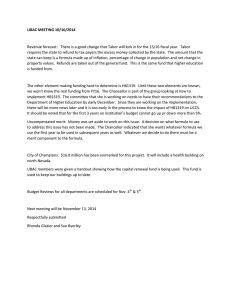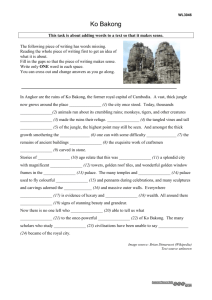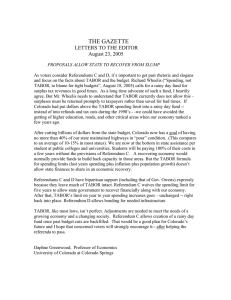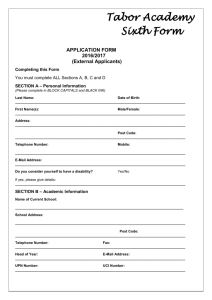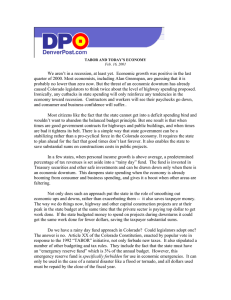(by Teresa Petrozzi - translated by Raphael Bonanno ofm)
advertisement
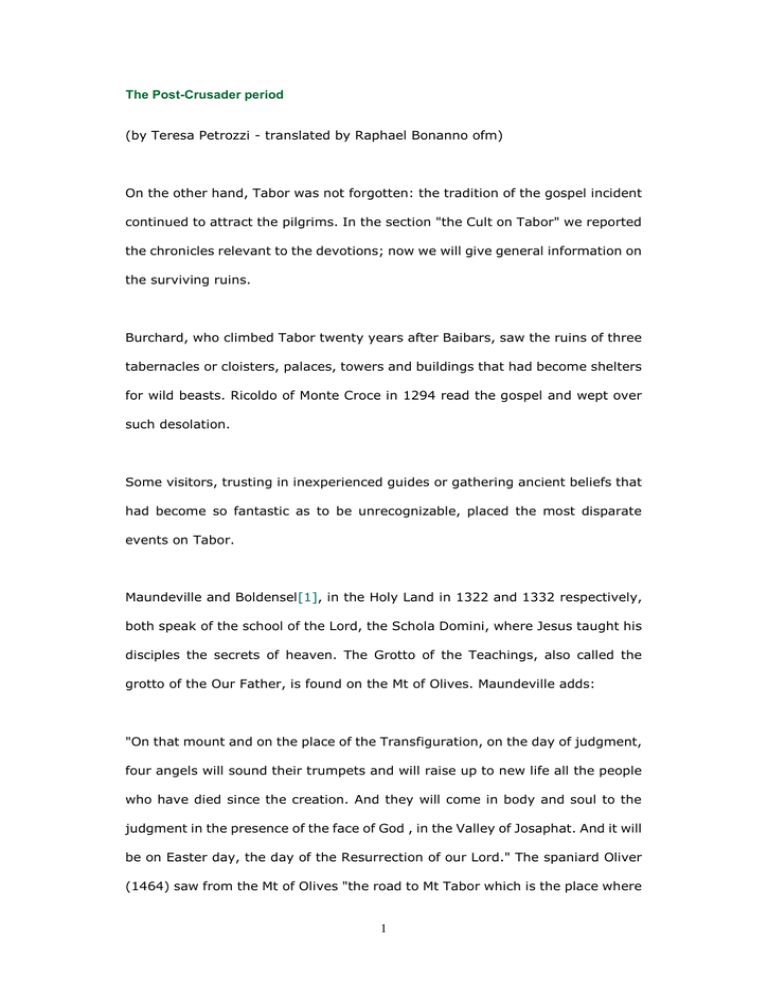
The Post-Crusader period (by Teresa Petrozzi - translated by Raphael Bonanno ofm) On the other hand, Tabor was not forgotten: the tradition of the gospel incident continued to attract the pilgrims. In the section "the Cult on Tabor" we reported the chronicles relevant to the devotions; now we will give general information on the surviving ruins. Burchard, who climbed Tabor twenty years after Baibars, saw the ruins of three tabernacles or cloisters, palaces, towers and buildings that had become shelters for wild beasts. Ricoldo of Monte Croce in 1294 read the gospel and wept over such desolation. Some visitors, trusting in inexperienced guides or gathering ancient beliefs that had become so fantastic as to be unrecognizable, placed the most disparate events on Tabor. Maundeville and Boldensel[1], in the Holy Land in 1322 and 1332 respectively, both speak of the school of the Lord, the Schola Domini, where Jesus taught his disciples the secrets of heaven. The Grotto of the Teachings, also called the grotto of the Our Father, is found on the Mt of Olives. Maundeville adds: "On that mount and on the place of the Transfiguration, on the day of judgment, four angels will sound their trumpets and will raise up to new life all the people who have died since the creation. And they will come in body and soul to the judgment in the presence of the face of God , in the Valley of Josaphat. And it will be on Easter day, the day of the Resurrection of our Lord." The spaniard Oliver (1464) saw from the Mt of Olives "the road to Mt Tabor which is the place where 1 Adam was created and where Abraham and Sarah are buried"[2]. Von Harff, at the end of the 15th c., also says: "The Christians who live in the region and are Syrians, Jacobites, Georgians, Abyssinians and others, maintain that Adam the first man disobeyed God on this Mt Tabor and that at the end of time four angels will announce the day of judgment from this mountain top" The first pilgrim to give some solid information about the ruins was Niccol´o of Poggibonsi in 1345. Sources contemporary to the constructions which have come down to us unfortunately do not describe the structures or the decorations. The recent finds of archaeology are based only on the foundations and floors that remain. The pilgrim chronicles that mention the buidlings have a special importance inasmuch as they put us in contact with the reality and vicissitudes of the past. We read in Poggibonsi: "This mountain is very high and large, and almost round; and on top there is a flat surface, which once was a farmland but now is a wasteland; and in the middle there is a church, and, in the middle of said church, there is a tomb (round-shaped), elevated inside the whole building. And there, our Lord Jesus Christ, wanting to show his glory to his apostles, there where the tomb is, he was transfigured, and appeared suddenly with Moses and Elijah, and they spoke with him; and the voice was heard from heaven, and thus was written in golden letters on the said tomb, and they read thus: Hic est filius meus dilectus, in quo mihi bene complacui, ipsum audite (This is my beloved Son, in whom I am well-pleased, hear him). And on the earth there are forms, like the confused St Peter, St James and St John, fallen on the ground before the divine glory; and where St Peter fell, there is the inscription: Domine, bonum est nobis hic esse, etc. (Lord, it is good for us to be here). The church is almost destroyed except for the tomb." There remained the crypt then, with paintings and relevant graffiti on 2 a wall and on the floor, whereas the upper part of the edifice was destroyed. The ruins of the buildings still survived for a century and a half. In 1485 Suriano adds some architectural detail: "On Zebel Tubar [...} a church was built with three tribunes, with three tents pitched together. And where Christ was transfigured there was a stairway of fine marble, of eight steps, four yards wide, and at the top of this staircase there was a stone placed to serve as an altar." What so many past pilgrims had experienced here and elsewhere also happened to Suriano:"And once the Mass was over, we were attacked by thieves who were hidden in those carob trees, because they had seen the new chalice and chasuble of chremisin damascus material. Tamen (Latin for however), it was not a disaster because we were well-accompanied: but we did eat bread and salt together." Sixty-seven years passed by without any important information and then Boniface of Ragusa (1552) wrote: "On the summit of the mountan [...] there is a church with three chapels. On the spot where the Christ was seen in glory there is the largest chapel, with a chapel on the right to Moses and another on the left to Elijah [...} In the main chapel, by the grace of God, there is kept a statue of the Transfigured Savior [...] which is very elegant. Moses, the bearer of the Law, is painted on the right wall and Elijah on the left." Zuallart explains why the rigors of the climate did not complete the destruction begun by Baibars: "Nothing else remains except the three chapels which the infidel occupy, and as mosques they keep a roof to preserve them from the rain and rough weather." But while the roof protected the walls, the infidel had ruined the "very ancient paintings" of the central chapel. Zuallart saw only the remains. He wrote in 1586; Castela, who sixteen years later visited Tabor confirms the 3 change of the three chapels into mosques[3]. Levaillant noted also the edgings of the decorations left in 1613[4]. The Roman traveler Della Valle in 1616 found: "many ruins of a great church and a monastery, for as I imagine, they were constructed in the place, where our Lord was transfigured ", and he was surprised by the hay cultivated on top of the mountain. "But I saw later, that the mountain was inhabited on top; and that among the ruins of the ancient churches, there lived some few, very poor families, segregated from the rest of the world, some of which did the planting, which I certainly had compassion to see them in such a place; especially the half-nude young women and the little 4-5 year old children, whom I saw running among the trees, like wild cats." Della Valle is the only chronicler who, as far as we know, mentions a permanent settlement on the mountain. The situation worsened in the immediately following years. Quaresmi, in his monumental work on the Holy Land (1626), dedicates only a few lines to Tabor:" Currently almost everything has been destroyed: one sees many ruins of buildings and gates in the walls; from these it is easy to conclude that there used to be a strong fortress and other noble buildings. On the summit, on the side, besides the foundations of the buildings, one sees some underground rooms." __________ notes [1] Guilielmus de Boldensel, cf ELS--518. [2] Guillem Oliver, Romiatge de la casa sancta de Jherusalem, fet per mestre G.O., cuitad'a de Barcelona (1464), Barcelona 1900). 4 [3] H. Castela, Le sainct voyage de Hierusalem et Mont Sinay, faict en l'an du grand Iubil'e,1600, Bordeaux 1603. [4] Levaillant, Le pèlerin véritable, Paris 1613, 407. 後十字軍東征時期 The Post-Crusader period (by Teresa Petrozzi – translated by Raphael Bonanno ofm) 另一方面, 大博爾並未被遺忘, 傳統福音事件繼續吸引朝聖者。在"大博爾山的神祈崇拜" 我們報導了相關信仰的年代誌;現在我們將提供遺址的大致訊息。 Burchard 在 Baibars 20 年後登上大博爾山,看到三個大禮拜堂(或修道院),宮殿、塔及建築 物,此時這些建築已成野生動物的庇護所。在 1294 年,Ricolodo of Monte Croce 說到這段福音時, 為這樣的荒涼哭泣。 一些訪者相信一些沒經驗的導遊或是收集一些奇怪且不可辨識真偽的古老信仰,在大博爾 山上舉行一些奇異的活動。 1322 及 1332 年, Maundeville and Boldensel[1],在聖地同時提到天主的學校-the schola Domino, 在那兒耶穌教導門徒天堂的秘密。在橄欖山發現 The Grotto of the Teachings(我們天父的 洞穴)。 Maundeville 說: 「在審判日, 天主顯容的山上,4位天使將吹著喇叭為創世紀以來已死去的 人們喚起新生命。在審判日, 他們的身體及靈魂將出現在天主的面前。就在復活日,天主復活的 日子。」西班牙人奧利弗(Oliver)從橄欖山看到:「到大博爾山的路就是亞當被創造亞伯罕及莎拉 埋葬之地。」 Von Harff 在 15 世紀末也說: 「位在此地的基督徒是敘利亞人,雅各派,阿比希尼 亞人,及其他人, 這些基督徒保留了亞當是第一位違反上帝在大伯爾山的人,且最後4位天使將 從山頂宣告審判日。」 在 1345 年,第一位給予遺址的可信消息的朝聖者是 Niccol’o of Poggibonsi。那些過去流傳 的建築很不幸地並沒有描述者所說的架構及裝飾。近期考古的學者發現, 只剩遺址的地基及地 板。朝聖者的年代誌指出這些建築重要的原因在於他們把我們與過去的事實及興衰連接起來。 在 Poggibonsi 文章中我們讀到:此山巨大且是圓形,山頂有一平台,曾是農地但今日已成 荒地,平台中有一教堂,教堂中有一墳墓在建築物中隆起。在那兒我們的基督耶穌想要對他的追 隨者顯其榮耀,在那兒他顯容,突然梅瑟及厄里亞的面孔出現,他們與祂說話,聲音從天空中聽 到,字句被刻在傳說的墳墓裡。接著,他們讀到: Hic est filius meus dilectus, in quo mihi bene complacui, ipsum audite(這是我的愛子,我以他為榮,你們要聽從他。)地上有天主顯榮前的圖案, 就像那三位困惑的門徒, 伯多祿、雅各伯、若望(St Peter, St James, St John);在伯多祿跌倒地點有 題銘:Domine, bonum est nobis hic esse, etc.(上主,能在此與您同在是我們的榮耀) 。教堂除墳 墓外,幾乎被摧毀。那兒遺留的地窖中有畫,牆上、地上有石書,但建築物的上半部已被摧毀。 遺址仍保存一個半世紀。在 1485 年,Suriano 增加一些細節:在 Zebel Tubar 他寫著:在 Z 高 tubar〔….有一個教堂有 3 個講壇,3 個釘在一起的蓬帳。在基督顯容的地方有精緻大理石的 階梯,共 8 階,各 4 碼寬,樓梯間的頂端有一個石做的祭壇。 5 眾多過去朝聖者在各地經歷的事也發生在 Suriano 身上: 「當彌撒一完成,我們遭受躲在佳 樂樹後的盜匪攻擊。 因為他們看到了新聖杯、祭袍。然而這不算甚麼災難, 因為我們彼此陪伴, 但我們也吃了麵包和鹽。」 6年過了,沒任何新消息。接著 Boniface 寫到:在山頂上有3個教堂、3個禮拜堂。右邊 的禮拜堂是為梅瑟而設,左邊是為厄里亞。中間的禮拜堂有一個極高雅顯容的救世主雕像。梅瑟, 法律執行者,被畫在右牆,厄里亞畫在左側。 Zuallart 解釋為什麼嚴厲的氣候並沒有完全破壞這些從 baibars 時代就被破壞的建築: 「什麼 都沒留下,除了被異教徒佔據的教堂。像清真寺一樣,他們保留屋頂以防雨水及惡劣天氣。」屋 頂保留了牆,但異教徒摧毀了極古老的畫。Zuallart 僅看到殘骸。他寫道:Castela 16 年後訪大 伯爾山證實 3 個禮拜堂變成了清真寺。Levaillant 也說裝飾的邊留下來了。 1616 年,羅馬旅者 Della Valle 發現:「我臆測大教堂及修道院的遺址建在此地,就在天主 顯容的地方」 。當他看到山頂已收成的乾草他感到很驚訝。 「但之後我看到此山盤踞山頂,在古 老教堂群中的遺址,住著一些與世人隔絕的窮人,他們有些人種東西,在這樣的地方,看到他們 我感到很同情;尤其是半裸的年輕女子與4-5歲的小孩在樹林間追逐,就像野貓一樣。」據我 們所知,Daella Valle 是唯一年代紀錄者,他提到了山上永久的移民。 再接下來幾年情況變得更糟。Quaresmi, 在他的不朽的聖地(Holy Land)著作中,只有幾行有 關大博爾山的文字:「目前幾乎被完全破壞;有人看到很多殘骸及牆上的門。由此推論那兒曾有 強大的防衛及偉大的建築物。在山頂邊,建築物基地旁,有人看到地下的房間。」 6
